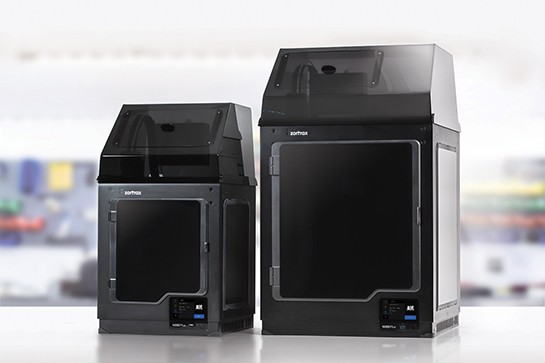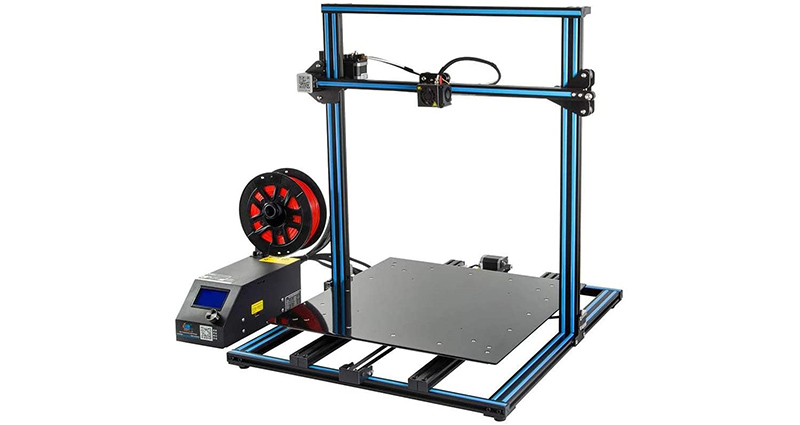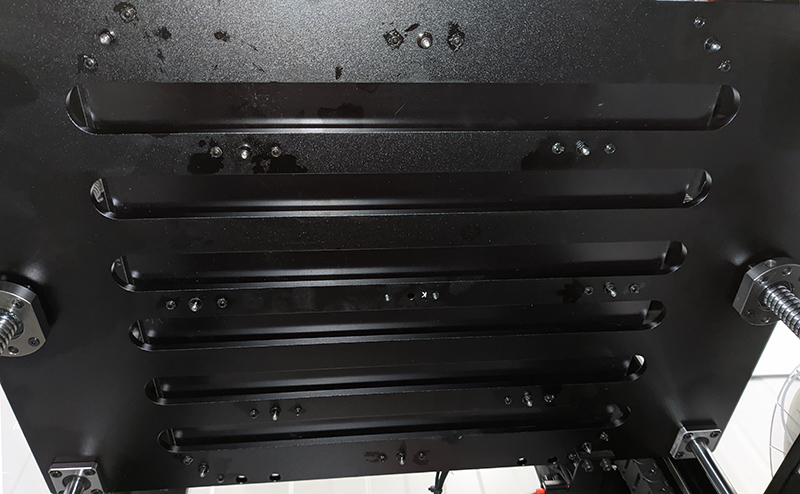
FDM 3D printers are currently available on the market in a wide variety of build volumes. From printers with bases of 15 x 15 cm to bases of 50 x 50 cm. There is a general belief that the larger the build volume is, the better. This is due to the reasoning that everything that can be printed on a small printer can be printed on a large printer, but not the other way around.
While this is correct in principle, and it appears that a large volume printer has no disadvantage over a small one, a closer look at the technical aspects of each will reveal some important trade-offs that may tip the balance in favour of small volume FDM 3D printers.

Image 1: Creality CR10 S5 with 50 cm base. Source: Creality
First of all, it is necessary to analyse the manufacturing base. Small bases have a much higher degree of flatness than larger ones, due to the fact that they are easier to produce. In addition, to avoid deformations, the larger the base size, the greater its thickness should be, which is not always the case. This means that while the levelling of a 20 x 20 cm base is very simple, in 30 x 30 cm or 40 x 40 cm bases it is common for there to be significant differences in height between the centre and the corners. This is particularly noticeable in aluminium bases when heated, as larger sizes also mean greater deformations.
This makes it more difficult to obtain a quality first layer of print, which is essential to ensure proper adhesion to certain materials. Some professional large format printers such as the Raise3D Pro2 and Pro2 Plus include additional anchor points in addition to those in the corners to compensate for these deformations and improve flatness.

Image 2: Rear view of the construction base of a Raise3D Pro2. Source: Filament2Print
However, the problems of large format printers compared to small format printers are not limited to poorer substrate flatness. Larger base size also means longer printhead travels, which translates into longer belts and guides. Longer drive belts are also associated with a loss of positioning accuracy, while longer guides or rails are susceptible to deformation and linearity defects.
To compensate for this, larger format printers would require specific designs and higher quality components and lower manufacturing tolerances. However, this is rarely the case, so it could be said that the accuracy of an FDM 3D printer decreases as a function of its size.

Image 3: Zortrax M200 Plus small format industrial printer. Source: Zortrax
Another common belief is that even if the parts produced are small in size, a 3D printer with a larger base will allow more parts to be made each time. This is correct, however it has more disadvantages than advantages. Printing times in FDM 3D printing are proportional to the number of copies being printed simultaneously. This means that the time difference between making one production of 10 parts and making two of 5 parts is negligible, increasing only in the time needed to remove the first parts and launch the second production. However, it has a major drawback: the probability of failure increases with the duration of the job. The probability of failure in a 12-hour production is always higher than in the case of a 6-hour production. Moreover, in the case of higher production requirements, it is always a better solution to purchase two small printers working in parallel than one large-format printer, as the times and losses in the event of failure are reduced by half.
When selecting an FDM 3D printer, the criterion should not be to choose the largest one that fits within the budget, but the smallest one that meets the user's most common part size requirements. If 95% of the parts can be manufactured on a 20 x 20 cm base, it would be advisable to consider the possibility of acquiring a small-sized machine and manufacturing the larger parts in parts and then assembling them.












